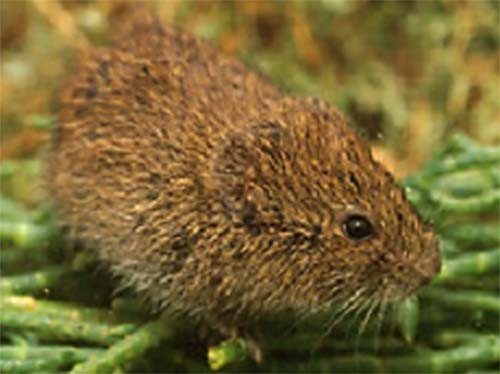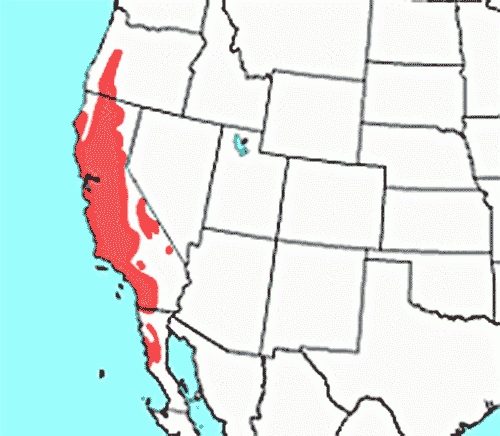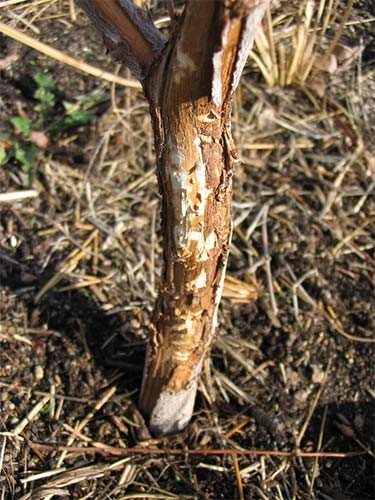California meadow mouse / Microtus californicus
Area of Distribution
The California vole is the most widespread vole in the state, found in the Owens and Central valleys and nearly the entire length of the coast range. It is also located in clear cuts and grassland in the southwestern Cascades of Oregon.
Above ground foraging California Vole populations can be controlled using the Vole Control Bait Station System with the Tent Set-up Method.
 California vole |
 Distribution of the California vole |
| Pictures from - National Museum of Natural History ©2004 Smithsonian Institution | |
Physical characteristics
The California vole is 6 - 8 ½ inches in total length. Its fur is tawny olive to cinnamon brown with brown to black overhairs. The underparts are grayish, and the tail is bicolor.
Reproduction
Several adults and young may occupy a burrow system. Their home range is usually no more than a few hundred square feet, but may vary with food supply, habitat quality, and population levels. California voles may breed any time of the year, but the peak breeding period is the spring. They are extremely prolific with females maturing in 35 to 40 days. They have 5 to 10 litters a year with litter size of 3 to six young.
Ecology
The California vole inhabits the chaparral woodland shrubland of California. It is found in both wet and well-drained areas. They construct both surface runways and extensive underground burrows. They may use pocket gopher burrows. They are active throughout the year, chiefly at dawn and dusk. They feed mainly on the leafy parts of grasses, sedges, and herbs. They have food stores of seeds and other plant matter in underground chambers. They cause damage by feeding on a wide range of garden plants as well as turf. They feed underground on the roots of trees, shrubs, herbaceous plants, and bulbs. They gnaw the bark of trees a few inches above the ground to a few inches below the ground, usually in fall and winter.
Signs of California Vole Activity
The clearest sign of their presence are the well traveled, above ground runways that connect to burrow openings. The maze of runways leads to multiple burrow holes that are 1 ½ to 2 inches in diameter. The runways are usually hidden beneath a protective layer of grass or other groundcover. Fresh vegetation clippings and fecal pellets along their runways are indicators of their presence. The runways are easily found by pulling back the overhanging groundcover or mulch.
Recommended Control Method
The Tent setup with the Vole Control Bait Station is most effective in controlling voles in the open grassy areas, because they feel safe from predators while they eat the bait. Occasionally, California voles may have tunnels under the mulch in your landscaped areas, if so, use the Mulch Covered Method setup of the bait stations to gain control in these areas.
It is important to act before vole numbers get too high, especially before winter snow provides cover. Damage that occurs under snow cover often escapes notice until its too late. In winter, it eats mostly roots and other underground parts of plants. The damage they can do to ornamental plants, trees, and garden plants can be quite severe and take several years to replace.
With their high reproductive potential, any remaining voles could repopulate an area quickly. With this potential for severe damage to your landscape and garden, a homeowner cannot afford to do nothing and assume a predator will control the problem. You must take immediate action to prevent the loss of valuable plantings. Effective action involves using the Vole Control Bait Station System, habitat modification, and regular monitoring in the fall and spring with the Apple Sign Test to detect any resurgence from surrounding areas. Pay particular attention to surrounding areas of your property that have heavy vegetation because such areas are likely sources of invasions.
